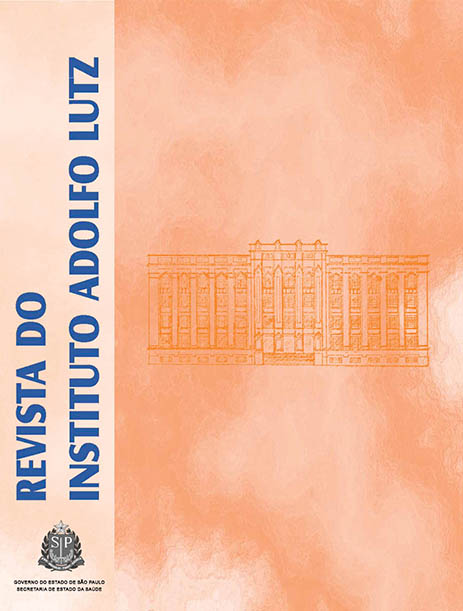Abstract
The information on the labels of solar protection are key to the effectiveness, safety and the quality control of these products. This study aimed to verify whether the information on the labels of solar protectors are in line with current standards and whether they adequately guide the consumer to choose and use the product for the effective protection. Using as an instrument to collect data from the inspection tour, developed and employed by the National Institute for Control of Quality in Health for analysis of labeling of these products have been verified and the information needed through a critical analysis, as if they were sufficiently explicit and appropriate. The study showed that 76% of the products tested failed to meet the technical requirements set by the rules, leaving to present important information regarding the manufacture, method of use and restrictions, warnings of phrases, specific indications of the product and care to be observed when using it. The words contained in the labels were not sufficient and not adequate to guide the consumer to obtain the necessary sun protection. Labels for sun protection an urgent need for a careful review. The omission of technical requirements established, as well as building health violation, causes damage to the corresponding shares of surveillance.
References
1. Radiação Solar: exposição excessiva. Instituto Nacional do Câncer - INCA [acesso em 26/09/2008]. Disponível em: http://www.inca.gov.br/conteudo-view.asp?id=21
2. Protetor Solar: Resumo da análise. Instituto Nacional de Metrologia - INMETRO [acesso em 02/08/2006]. Disponível em: http://www.inmetro.gov.br/protsolar.html
3. Bakos L.et al. Melanoma hereditario: prevalência de fatores de risco em um grupo de pacientes no Sul do Brasil, An Bras Dermato. 2004;79(1):53-60.
4. Campanha Nacional do Câncer de pele: contra o câncer de pele. Sociedade Brasileira de Dermatologia. [acesso em: 05.11.2008]. Disponível em: http://www.sbd.org.br/publico/cancer/campanha.aspx.
5. The International Commission on Non-ionizing Radiation Protection. Guidelines on limits of exposure to ultraviolet radiation of wavelengths between 180nm and 400nm (incoherent optical radiation), Health Physics. 2004;87(2):171-86.
6. Serpone N, Salinaro A, Emeline AV, Horikoshi S, Hidaka H and Zhao J. An in vitro systematic spectroscopic examination of the photostabilities of a random set of commercial sunscreen lotions and their chemical UVB-UVA active agents,Photochem PhotobiolSci. 2002;(1):970-81.
7. Pattanaargson S and Limphong P. Stability of octyl methoxycinna-mate and indentifi cation of its photo-degradation product, Int J Cosmetic Sci. 2001;23:153-60.
8. Kimrough DR. The photochemistry of sunscreens. J Chem Educ.1997;74(1):51-3.
9. Autier P.et.al. Quantity of sunscreen used by European students. Br J Dermatol. 2001;144:288-91.
10. Azurdia RM.et.al. Sunscreen application by photosensitive patients is inadequate for protection. Br J Dermatol. 1999;140:255-8.
11. Szepietowski JC.et.al. Application of sunscreen preparations among Young Polish people. J Cosmet Dermatol. 2004: 369-72.
12. Gasparro PF, Mitchnic M and Frank JN. A review of sunscreen safety and effi cacy, Photochem Photobiol. 1998;3(68):243-56.
13. Shaath NA, Fares HM. and Klein K. Photodegradation of sunscreens chemical: solvent considerations, Cosmet Toil. 1990;105:41-4.
14. Maes D, Marenus K and Smith WP. New advances in photoprotection,Cosmet Toil. 1990;105(12):50-2.
15. Honeyman JM. VI Regional Conference of IFSC, Cosmet Toil. 1989;1:18-21.
16. Brasil. Congresso Nacional. Lei nº 6360 de 23 de setembro de 1976. Dispõe sobre a vigilância sanitária a que ficam sujeitos os medicamentos, as drogas, os insumos farmacêuticos e correlatos, cosméticos, saneantes e outros produtos, e dá outras providências. Diário Oficial [da] República Federativa do Brasil, Brasília, DF, 24 de set. 1976.
17. Brasil. Presidência da República. Decreto nº 79.094, de 05 de janeiro de 1977. Regulamenta a Lei nº 6.360 de 23 de setembro de 1976, que submete a sistema de vigilância sanitária os medicamentos, insumos farmacêuticos, drogas, correlatos, cosméticos, produtos de higiene, saneantes e outros. Diário Oficial [da] República Federativa do Brasil, Brasília, DF, 07 jan. 1977.
18. Brasil. Presidência da República. Decreto nº 83.239 de 06 de março 1979. Altera o Decreto nº 79.094, de 5 de janeiro de 1977, que regulamenta a Lei nº 6.360, de 23 de setembro de 1976. Diário Oficial [da] República Federativa do Brasil, Brasília, DF, 07 mar. de 1979.
19. Brasil. Ministério da Saúde. Agência Nacional de Vigilância Sanitária (ANVISA). Resolução RDC nº 237 de 22 de agosto de 2002. Aprova Regulamento Técnico Sobre Protetores Solares em Cosméticos. Diário Oficial [da] República Federativa do Brasil, Brasília, DF, 23 ago. 2002.
20. Brasil. Ministério da Saúde. Agência Nacional de Vigilância Sanitária (ANVISA). Resolução RDC nº 47 de 16 de março de 2006. Aprova o Regulamento Técnico “Lista de filtros ultravioletas permitidos para produtos de higiene pessoal, cosméticos e perfumes”. Diário Oficial [da] República Federativa do Brasil, Brasília, DF, 17 mar. 2006.
21. Brasil. Ministério da Saúde. Agência Nacional de Vigilância Sanitária (ANVISA). Resolução RDC nº 211 de 14 de julho de 2005. Ficam estabelecidas a Defi nição e a Classifi cação de Produtos de Higiene Pessoal, Cosméticos e Perfumes, conforme Anexos I e II desta Resolução. Diário Oficial [da] República Federativa do Brasil, Brasília, DF, 18 de jul. 2005.
22. Brasil. Ministério da Saúde. Agência Nacional de Vigilância Sanitária (ANVISA). Resolução RDC nº 48, de 16 de março de 2006. Aprova o Regulamento Técnico “Lista de substâncias que não podem ser utilizadas em produtos de higiene pessoal, cosméticos e perfumes. Diário Oficial [da] República Federativa do Brasil, Brasília, DF, 17 de mar. 2006.
23. Costa EA, Rozenfeld S. Constituição da Vigilância Sanitária no Brasil. In: Rosenfeld, S (org.) Fundamentos da Vigilância Sanitária. Rio de Janeiro: Editora FIOCRUZ. 2000, p.15-40.
24. Buss PM. Promoção da Saúde e qualidade de vida, Cien Saúde Colet. 2000;5(1): 163-77.
25. Pesquisa Cooperativa 2008: Brasileiro consome pouco protetor solar. Associação Brasileira da Industria de Higiene Pessoal, Perfumaria e Cosméticos.[acesso em: 15.10.2008]. Disponível em:http://www.abihpec.org.Br/notícias-texto.php?id=276

This work is licensed under a Creative Commons Attribution 4.0 International License.
Copyright (c) 2009 Instituto Adolfo Lutz Journal
